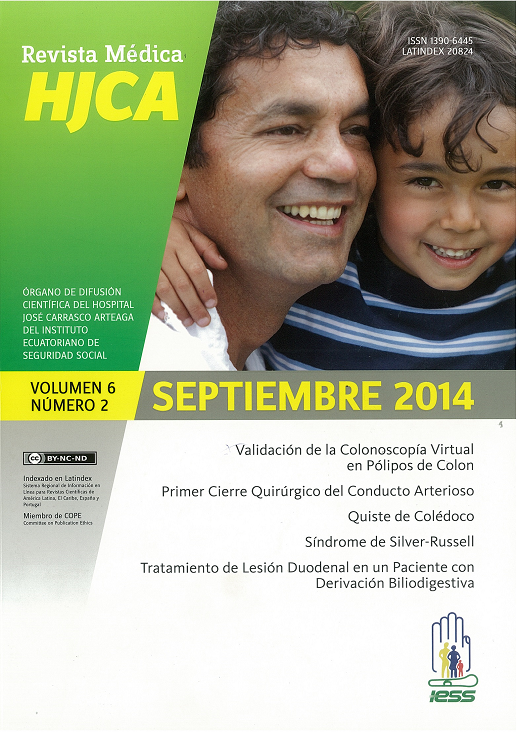Prevalencia de Conducta Ansiógena y Factores Asociados, en Niños de Quinto a Séptimo de Básica
Palabras clave:
TRASTORNOS DE ANSIEDAD, FACTORES DE RIESGO, NIÑO, PREVALENCIA, FAMILIA, ANXIETY DISORDERS, RISK FACTORS, CHILD, PREVALENCE, FAMILYResumen
INTRODUCCIÓN: Los trastornos de ansiedad en los niños/as, constituyen un gran problema de salud. El objetivo de esta investigación fue determinar la prevalencia de conducta ansiógena y factores asociados, en niños/as de quinto a séptimo de básica de las escuelas “Santo Domingo de Guzmán” y “Brasil” del cantón Gualaceo, Azuay-Ecuador, año lectivo 2011-2012.
MÉTODOS: El presente estudio de prevalencia que incluyó niños en etapa escolar del Cantón Gualaceo, para el diagnóstico de ansiedad se utilizó el Test IDAREN y para funcionalidad familiar el test FF-SIL. Las variables estudiadas fueron: sexo, edad, año lectivo, residencia, funcionalidad familiar, emigración y actividad deportiva. Se utilizaron la razón de prevalencia con IC 95% y Chi cuadrado de Pearson para demostrar asociación entre ansiedad y factores asociados además del valor de P para la significancia estadística.
RESULTADOS: 310 niños fueron incluidos en el estudio. La ansiedad-rasgo se ubicó en un 15.8%, la media de edad se ubicó en 10.10, el sexo masculino fuel más prevalente con un 76.1%, el 35.5% de los estudiantes cursaban el sexto año de educación básica, el 64.5% de la población reside en el área urbana del Cantón, el 27.1% de las familias presentaron disfuncionalidad, el 36.5% de la población presento, el 12.6% de la población no practica deporte alguno.
CONCLUSIONES: Los comportamientos ansiógenos fueron más prevalentes en las edades inferiores, el sexo masculino, en el área rural, en niños con disfuncionalidad familiar, con presencia de migración y en los que realizan actividad física. Únicamente el sexo se asoció estadísticamente con ansiedad.
ABSTRACT
PREVALENCE OF ANXIOGENIC BEHAVIOR, AND ASSOCIATED FACTORS IN SCHOLAR CHILDREN
BACKGROUND: Anxiety disorders in children are a major health problem. The objective of this research was to determine the prevalence of anxiogenic behavior and associated factors in children from fifth to seventh grade in schools “Santo Domingo” and “Brazil” Gualaceo Canton of Cuenca-Ecuador, 2011-2012.
METHODS: This study included prevalence of school-age children of the Gualaceo Canton, for the diagnosis of anxiety the IDAREN Test was used and for familiar functionality the FF-SIL test. The variables studied were: sex, age, school year, residence, family functioning, emigration and sports activity. The prevalence ratio was used with 95% and Pearson Chi-Square to demonstrate association between anxiety and associated factors besides P value for statistical significance.
RESULTS: Three hundred ten (310) children were included in the study. The trait anxiety stood at 15.8%, the average age was 10.10, male was the most prevalent sex with 76.1%, 35.5% of students were enrolled in the sixth year of primary education, 64.5% of the population resides in the urban area of the Canton, 27.1% had dysfunctional families, 36.5% of the present population, 12.6% of the population do not practice any sport.
CONCLUSIONS: The anxiogenic behaviors were more prevalent in the younger age, male sex, in rural areas, in children with dysfunctional families, with the presence of migration and those doing physical activity. Only sex was statistically associated with anxiety.

